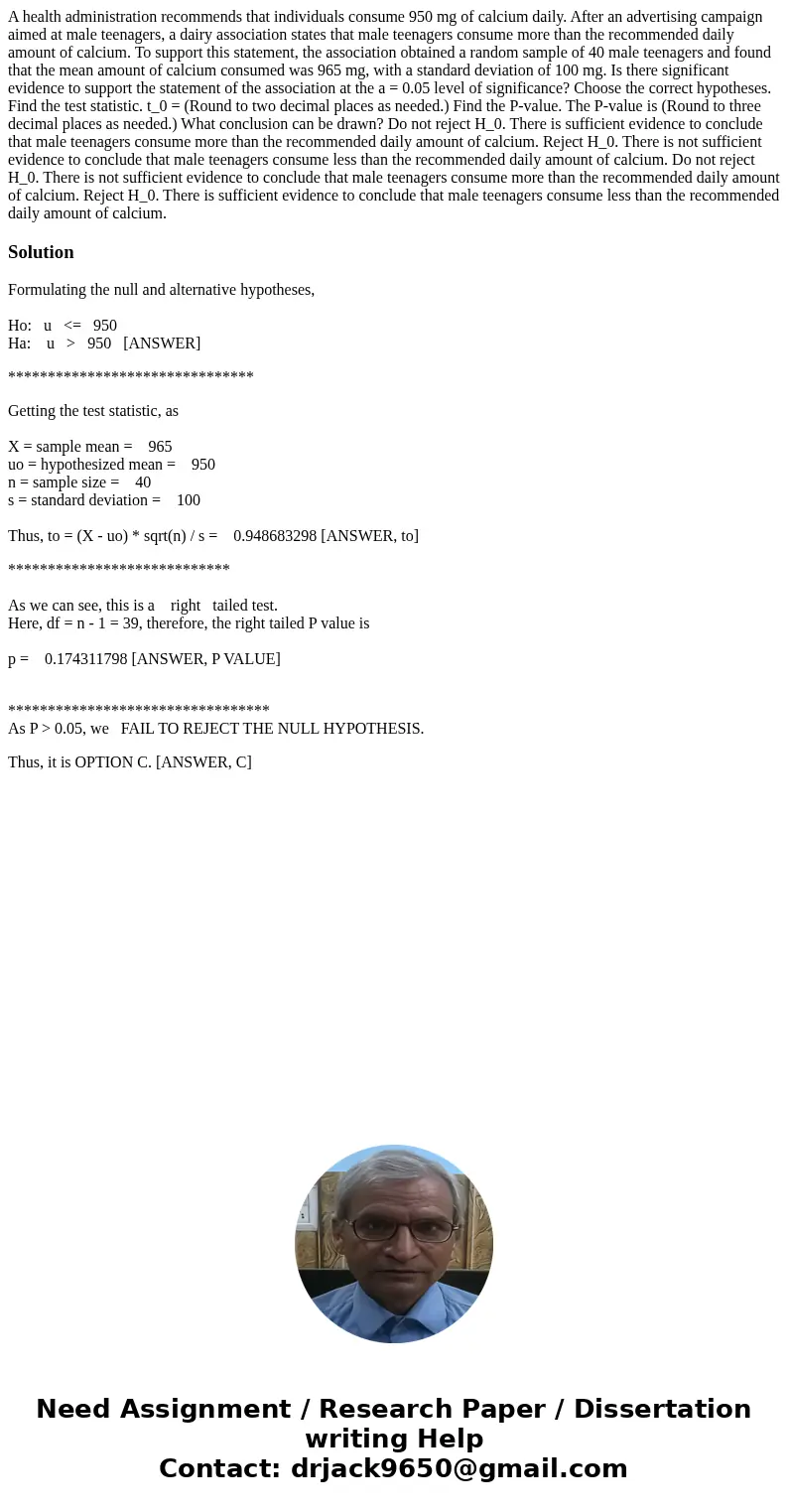A health administration recommends that individuals consume 950 mg of calcium daily. After an advertising campaign aimed at male teenagers, a dairy association states that male teenagers consume more than the recommended daily amount of calcium. To support this statement, the association obtained a random sample of 40 male teenagers and found that the mean amount of calcium consumed was 965 mg, with a standard deviation of 100 mg. Is there significant evidence to support the statement of the association at the a = 0.05 level of significance? Choose the correct hypotheses. Find the test statistic. t_0 = (Round to two decimal places as needed.) Find the P-value. The P-value is (Round to three decimal places as needed.) What conclusion can be drawn? Do not reject H_0. There is sufficient evidence to conclude that male teenagers consume more than the recommended daily amount of calcium. Reject H_0. There is not sufficient evidence to conclude that male teenagers consume less than the recommended daily amount of calcium. Do not reject H_0. There is not sufficient evidence to conclude that male teenagers consume more than the recommended daily amount of calcium. Reject H_0. There is sufficient evidence to conclude that male teenagers consume less than the recommended daily amount of calcium.
Formulating the null and alternative hypotheses,
Ho: u <= 950
Ha: u > 950 [ANSWER]
*******************************
Getting the test statistic, as
X = sample mean = 965
uo = hypothesized mean = 950
n = sample size = 40
s = standard deviation = 100
Thus, to = (X - uo) * sqrt(n) / s = 0.948683298 [ANSWER, to]
****************************
As we can see, this is a right tailed test.
Here, df = n - 1 = 39, therefore, the right tailed P value is
p = 0.174311798 [ANSWER, P VALUE]
*********************************
As P > 0.05, we FAIL TO REJECT THE NULL HYPOTHESIS.
Thus, it is OPTION C. [ANSWER, C]

 Homework Sourse
Homework Sourse